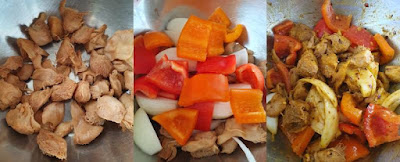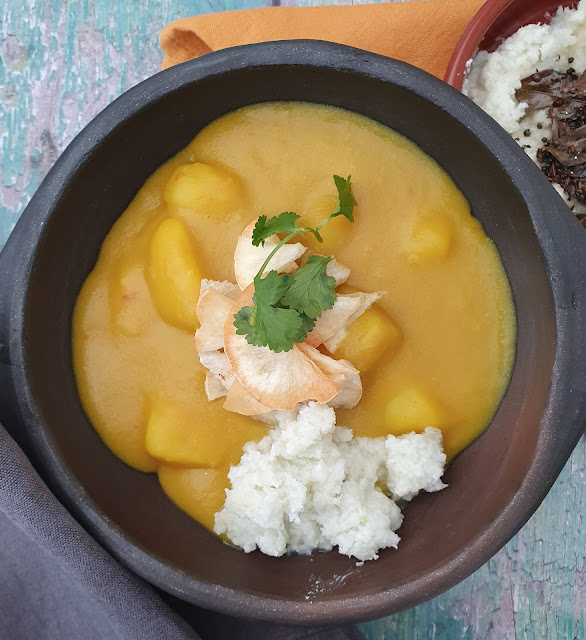World Travels - Tanzania
I was inspired to culinary travel to Tanzania and in particular Zanzibar for my next recipe try-out by my last outing in Oman and realising the connections between Oman and Zanzibar cuisine by the Omani-Zanzibari chef Dina Macki.
Earth, sea and sky, all seemed wrapped in a soft and sensuous repose...The sea of purist sapphire, which had not parted with its blue rays to the atmosphere...lay ...under a blaze of sunshine which touched every object with a dull burnish of gold.Richard Francis Burton (British Explorer), 1856 about Zanzibar [1]
Like many aspects of history the British took control of Zanzibar in 1896 from the Sultanate of Oman and freed the slaves (but compensated the owners) in 1897 appointing British citizens from 1913 until 1963 to govern Zanzibar with the Omani sultans who towed the British line. In 1963 Zanzibar received independence from the UK as a constitutional monarchy under the Sultan but was overthrown in 1964 in the Zanzibar Revolution with thousands of Zanzibaris of Arabic and Indian descent being killed and thousands detained or expelled. Later in 1964 Zanzibar united with the mainland of Tanganyika to form Tanzania.
Mshikaki
Mshikaki is a beloved Tanzanian delicacy; generally it is beef marinated in a blend of ginger, lemon, and chilli that is skewered and grilled over charcoal.
Popular as a snack option it is often paired with roasted potatoes to create “chips mshikaki”, but it is also commonly served alongside fried cassava and roasted or smoked plantains.
So I decided that I could take this idea and veganise the recipe by using some lions mane mushrooms that I recently bought in a supermarket in the UK.
Ingredients
Serves 6 skewers
- 180g lion's mane mushroom chunks cut in 2.5 cm cubes
- juice of a lemon
- seasoning- salt, black pepper
- 1/2 tbsp cumin
- 1/2 tsp turmeric
- 1/2 tsp chilli flakes
- 1 clove garlic peeled and crushed.
- 1 onion - cut in large chunks (about 2.5 cm)
- 1 bell pepper - also cut in large chunks (about 2.5 cm). Feel free to use a selection of yellow, green or red bell peppers.
- olive oil - use half of the olive oil for basting and the other half for marinating the mshikaki .
- oil for greasing the pan or grill -use any high smoke oil such as vegetable, rapeseed or peanut oil.
Instructions
- If you are using wooden skewers, soak them in water for at least 30 minutes or overnight.
- In a medium-sized bowl, combine the salt, black pepper, cumin, turmeric, chili flakes, crushed garlic, lemon juice, and half of the olive oil. Add the mushroom pieces, onion, and the bell pepper to the bowl; combine, cover and allow to marinate at room temperature for at least two hours, or overnight in the fridge.
- Skewer the mushroom chunks, followed by the onion, and then the bell pepper. Keep alternating until the skewer is full. Lightly brush a grill pan or rack with oil. Heat the grill pan over high heat. If you are using a charcoal grill, make sure it is on medium heat.
- Grill the mshikaki in batches for 3 to 4 minutes on each side, or slightly more if you prefer them more charred. Keep basting with olive oil and turning as you go. These would be perfect for a barbeque.
- Place the mshikaki skewers on a large plate, cover them with a piece of aluminium foil, and allow them to rest for 5 minutes before serving.
- You can serve with any type of flatbread such as naan, chapati, or with rice. Mshikaki can also be served as they are, as an appetizer!
 |
| Skewering the mushroom, onions and peppers |
 |
Urojo
Ingredients
- 8 Smallish potatoes
- 600 ml Water for flour mixture
- 3 Limes juiced
- 63 g plain flour
- 63 g Gram flour (I used 126g of Gram flour for a gluten free option)
- 1 tsp Turmeric
- 1 tbsp tamarind sauce
- A pinch of salt
Instructions
- Peel and cube the potatoes.
- Place the potatoes in a saucepan and then cover with water and the lime juice.
- Boil for about 5 minutes until lime juice is well mixed; drain and then set aside.
- Combine and toss plain flour if using, gram flour, turmeric, and salt in another pot.
- Add the water and mix well until lump-free.
- Transfer the mixture to a saucepan and start cooking it slowly under medium heat stirring constantly.
- When the mixture becomes heavy, add drained potatoes, stirring for at least 5 minutes, and then leave to boil for a few more minutes.
- Serve with a choice of topping. Typical toppings are diced onions, potato dumplings, fried cassava shavings, bhajis, tamarind sauce, chillies, and coconut chutney.

|
Zanzibara, Vol.10(First Modern: Taarab Vibes from Mombassa & Tanga, 1970-1990) |






Comments